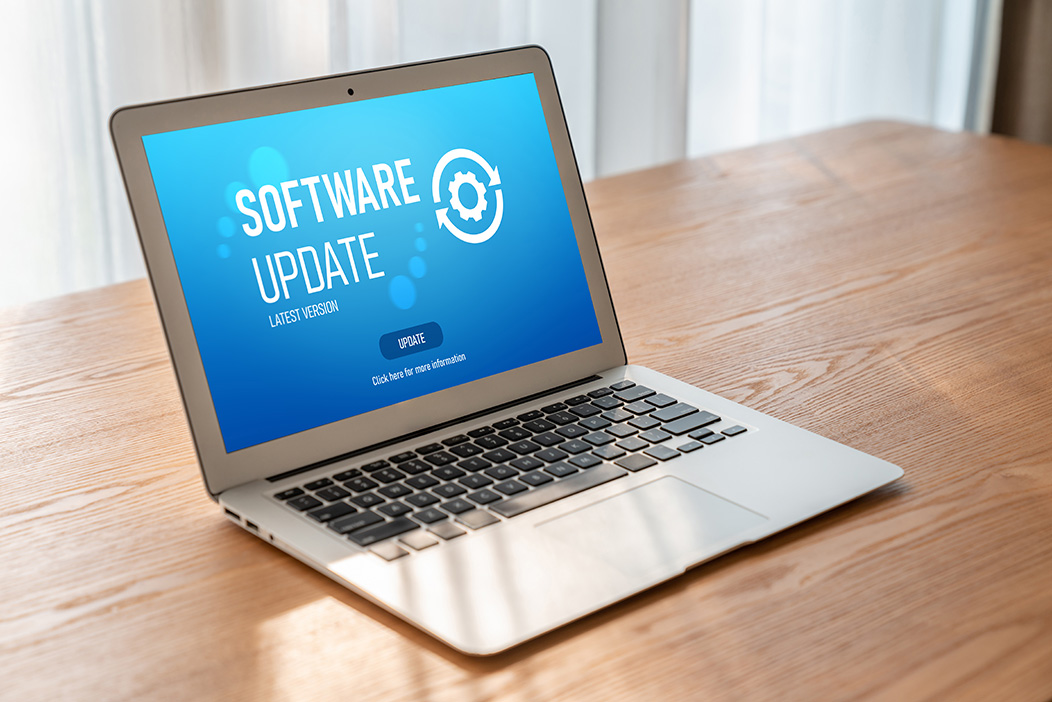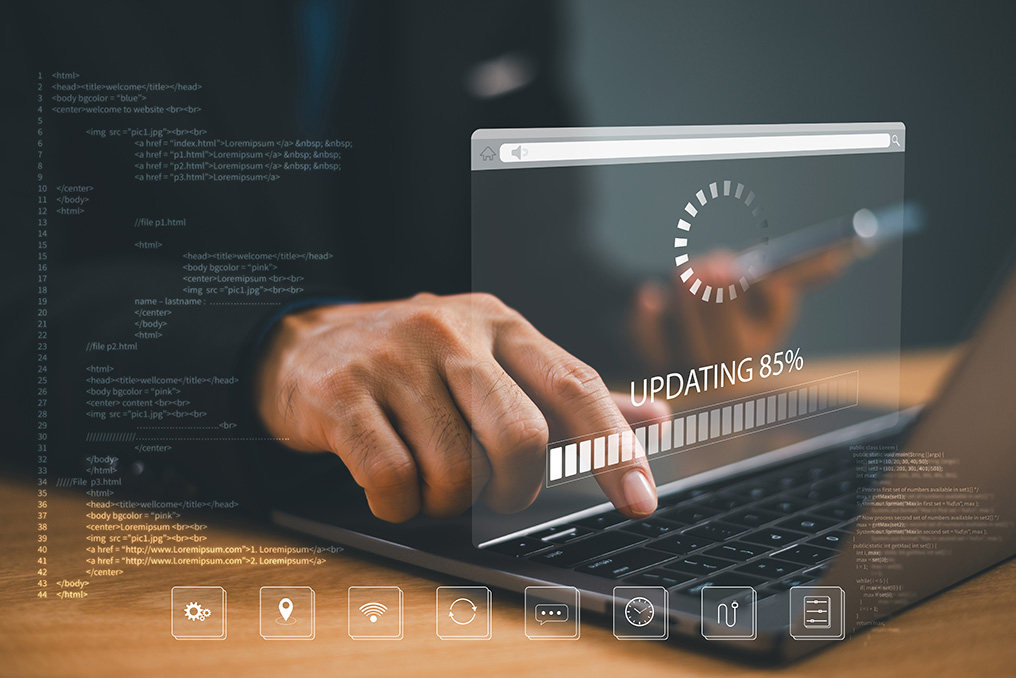The Endless Updates: Embracing Software Updates in Managed IT
Software updates are often seen as a nuisance, but they are essential for maintaining the security and performance of your IT systems. In a rapidly evolving digital landscape, staying up-to-date with software updates is crucial to protect your business from cyber threats and ensure optimal functionality. This article explores the importance of regular software updates and how managed IT services can help businesses navigate this continuous cycle effectively.

Managed IT: Your Software Gardeners
Managed IT services take on the role of software gardeners, ensuring your systems are always up-to-date with the latest security patches and performance enhancements. They manage the update process, so you don’t have to worry about the risks associated with outdated software. By outsourcing this critical function, businesses can focus on their core activities while ensuring their IT infrastructure remains secure and efficient.
The Role of Managed IT Services
1. Automated Updates and Patch Management: Managed IT services utilize automated systems to manage software updates and patches. This ensures that updates are applied promptly, reducing the risk of vulnerabilities and minimizing downtime.
2. Testing and Validation: Before deploying updates across an organization, managed IT services thoroughly test and validate updates to ensure they do not disrupt existing systems or cause compatibility issues.
3. Compliance and Reporting: Managed IT services ensure that all updates comply with industry standards and regulations. They also provide detailed reports on update activities, giving businesses insights into their IT health and security posture.
Importance of Regular Software Updates
Regular software updates are crucial for several reasons. They not only enhance security but also improve system performance and ensure compatibility with other software and systems.
Bolstering Your Digital Defenses
Cyber threats are constantly evolving, with new vulnerabilities and attack vectors emerging regularly. Software updates often include security patches that address these vulnerabilities, providing a critical defense against cyberattacks.
- Vulnerability Management: Regular updates help mitigate known vulnerabilities, reducing the risk of exploits. Cybercriminals frequently target outdated software with known weaknesses, so staying updated is essential for protecting sensitive data and systems.
- Protection Against Malware: Updates often include enhancements to antivirus and anti-malware capabilities, helping to protect systems from malicious software and other cyber threats.
Enhancing System Performance and Reliability
Software updates not only address security issues but also improve the overall performance and reliability of IT systems.
- Bug Fixes and Enhancements: Updates often include bug fixes and performance enhancements that improve the stability and efficiency of software. This can lead to better user experiences and increased productivity.
- Resource Optimization: Updates can optimize how software utilizes system resources, such as memory and processing power. This can result in faster and more efficient operations, reducing the strain on hardware and extending its lifespan.
Ensuring Compatibility with Other Software and Systems
As technology evolves, software must remain compatible with other systems and applications. Regular updates ensure that software can integrate seamlessly with new technologies and standards.
- Interoperability: Updates often include changes that enhance compatibility with other software and systems, ensuring smooth operation and communication between different IT components.
- Future-Proofing: By keeping software up-to-date, businesses can better prepare for future technological advancements and avoid potential disruptions caused by outdated systems.

Managed IT Services: Keeping Your Technology in Full Bloom
In the digital jungle, only the updated survive. Embracing software updates is essential for the security and performance of your IT systems. Managed IT services provide the expertise to keep your technology in full bloom, allowing you to focus on your business’s growth.
Proactive Monitoring and Management
Managed IT services employ proactive monitoring tools to track the health and performance of IT systems. This allows them to identify potential issues before they become critical problems and ensure that updates are applied in a timely manner.
- Real-Time Monitoring: Continuous monitoring of systems ensures that any issues are detected and addressed promptly. This proactive approach minimizes downtime and ensures that systems remain secure and efficient.
- Scheduled Maintenance: Managed IT services schedule updates and maintenance activities to minimize disruption to business operations. This ensures that critical updates are applied without impacting productivity.
Customizable Solutions
Managed IT services offer customizable solutions tailored to the specific needs of each business. This ensures that update and patch management strategies align with business goals and operational requirements.
- Scalable Services: Managed IT services can scale their solutions to meet the needs of businesses of all sizes. Whether a small business or a large enterprise, they provide the necessary resources and expertise to manage software updates effectively.
- Tailored Strategies: By understanding the unique requirements of each business, managed IT services can develop tailored strategies that address specific challenges and opportunities.
The unending cycle of software updates is a critical aspect of maintaining the security and performance of IT systems. While updates may seem like a nuisance, they are essential for protecting against cyber threats, enhancing system performance, and ensuring compatibility with other software and systems.
Managed IT services act as software gardeners, taking on the responsibility of managing updates and patches. Their expertise ensures that systems remain secure, efficient, and aligned with business goals. By embracing regular software updates and leveraging the support of managed IT services, businesses can navigate the digital jungle and thrive in a constantly evolving technological landscape."
Recent Blogs
Most attribution debates pretend to be about science. They’re about credibility. Sales wants proof that marketing’s dollars create pipeline. Marketing wants recognition that discovery takes…
Read MoreThink of traditional antivirus as a gate guard with a laminated binder of faces. If the intruder matches a mugshot, they’re denied. That worked when…
Read MoreDashboards don’t fall apart because math is hard. They fall apart because language is loose. UTM parameters were supposed to be boring – labels on…
Read MoreMost attribution debates pretend to be about science. They’re about credibility. Sales wants proof that marketing’s dollars create pipeline. Marketing wants recognition that discovery takes…
Read MoreThink of traditional antivirus as a gate guard with a laminated binder of faces. If the intruder matches a mugshot, they’re denied. That worked when…
Read MoreDashboards don’t fall apart because math is hard. They fall apart because language is loose. UTM parameters were supposed to be boring – labels on…
Read More


